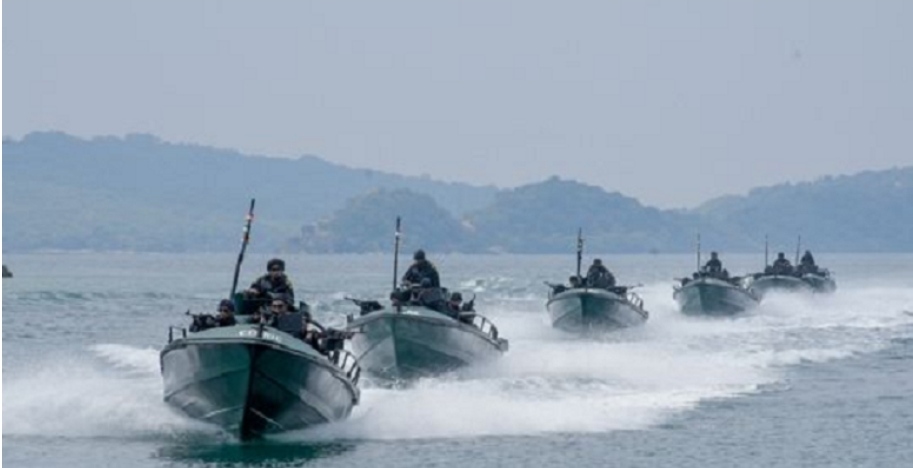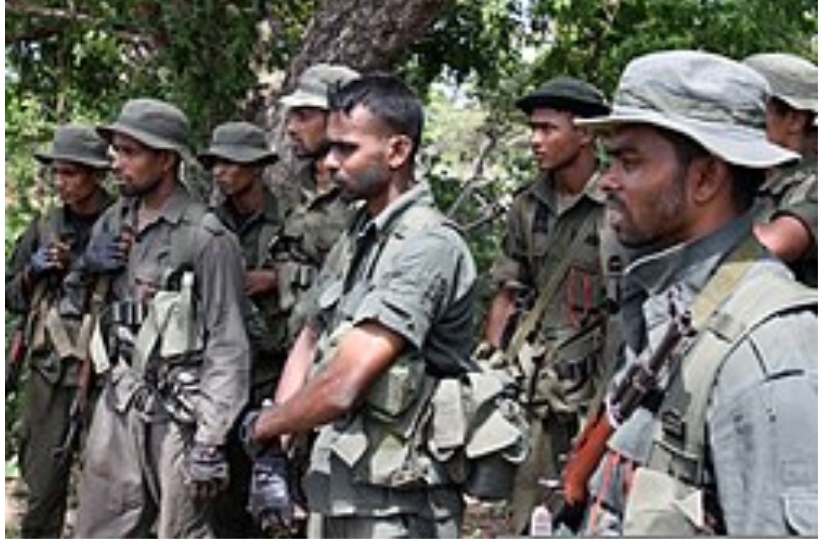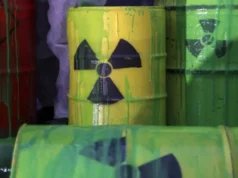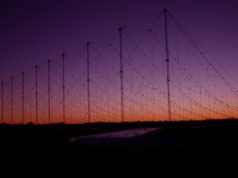Sri Lanka Navy Special Boat Squadron honoured with President’s Colours

Ranil Wickremesinghe the President and Commander – in – Chief of the Armed Forces of Democratic Socialist Republic of Sri Lanka awarded President’s Colours to the Sri Lanka Navy Special Boat Squadron (SBS) on Friday (01st March 2024). The momentous ceremony was held at the main parade ground of the Special Boat Squadron Headquarters, Trincomalee, in precision with time-honoured naval tradition. The distinguished honour was bestowed upon the Special Boat Squadron, in recognition of its significant role in the success of humanitarian operation and its members’ ongoing efforts to achieve the country’s maritime aspirations by combating an assortment of illegal activities at sea.
The Special Boat Squadron, demonstrating its commitment to the motto “Fortune Favours the Brave”, has been commanded twice in the past by Vice Admiral Priyantha Perera, the current Commander of the Navy. Trained in specialized combat techniques across sea, land, and air, its men possess a noble resolve for the motherland, beyond their call of duty.
The Special Boat Squadron was established on 08th November 1993 in Karainagar, Jaffna, meeting the need for a special unit to suppress terrorist activities in the shallow waters around the northern islands and lagoons. Established with 02 officers and 38 sailors, it was led by then Lieutenant Commander Ravindra Wijegunaratne. Later Admiral Ravindra became the head of the Navy and next the Chief of Defence Staff.
In the daring missions undertaken by the SBS to defend the nation’s sovereignty and territorial integrity, forty-two (42) personnel have been disabled, and sixty-two (62) brave men have sacrificed their lives.
The bestowment of the prestigious President’s Colour is testament to the squadron’s unwavering dedication and invaluable contributions in humanitarian operation and relentless efforts to safeguard our seas, battling illicit activities to advance country’s maritime ambitions.
It is modeled after the British Special Boat Service and was raised in 1993. Its role is Special Operations and Counter terrorism. Its form part of the Sri Lankan Special Forces alongside Army Special Forces Regiment, Air Force Special Forces and the Commando Regiment. BLACK KITS or Sea Zombies are two of its nick names.

The SBS in its role as a naval special forces unit it takes up a wide variety of operations such as amphibious raids, maritime counter-terrorism, reconnaissance and target indication, combat swimmer missions and small boat operations. As a Special Forces unit, its role is not limited to water-borne operations. The SBS conducts operations on land, together with other SF and with regular ground combat units of the Navy and the Army and on many occasions autonomously.
The roles of the Special Boat Squadron are predominantly focused on, but not restricted to,
Small boat Operations in support of littoral operations.
Covert beach recce (hydrographic survey) in advance of amphibious operations.
Covert assault route preparation in advance of amphibious assault.
Recovery or protection of ships subject to terrorist action.
Maritime Counter Terrorism
Reconnaissance and target indication in the deep battle space.
Assault on verified targets.
VBSS operation (Visit Board Search & Seizure).
VIP protection.
Due to frequent resistances and various Asymmetric tactics near the naval troop deployed areas in country, the Sri Lanka Navy (SLN) recognized the imminent need to raise a specially trained counter terrorist team and realized the value of special operations in the early stages of confronting separatist terrorism that devastated the country for over three decades. Although not formerly commissioned, the urge for action of few young and eccentric officers and men who were more than willing to put themselves in the harms’ way at enemy’s door step,was evident in the early confrontation with the LTTE.
Among them, Lieutenant Commander Shanthi Bahar had been a pioneer to lead a small team of specially trained sailors seeking the LTTE hideouts in jungles and thickets of Trincomalee. His untimely death in action delayed the foundation of a naval special force by many years.
The LTTE grew from a guerrilla group to quasi-conventional force and Sea Tigers to a considerable strength. The LTTE and its war fighting mechanism solely depended on the Sea Tiger force for survival, first the logistic train from high seas kept open in spite of determined offensive of the Navy.
Secondly, Sea Tigers have been an irritable distraction that lodged Navy’s resources to keep sea lines of communication with the Northern Peninsula. Thirdly, Sea Tigers mastered asymmetric warfare with suicide boats, divers, mines and littoral attacks in coastal waters and lagoons.
The Special Boat Squadron (SBS) was formerly inaugurated on 18 th January 1993 at SLNS Elara in Karainagar, the major naval base in Jaffna Peninsula in early nineties. The first batch of aspiring two officers and 76 sailors, mostly recruits and few Leading rates, joined on voluntary commitment to form the future elite commando of the Navy.
Nevertheless, the toll of training attrition was high as only the strong remained and weak fade away right throughout the rigorous training process. Finally, both officers and 25 of ratings survived to form nucleus of Special Boat Squadron under the charismatic leadership of Lieutenant Commander RC Wijegunaratne.
Two subalterns, Lieutenant Channa Jayasinghe and Sub Lieutenant SW Gallage were willing and dedicated officers who would dare the impossible to strike enemy as it had proven again and again in small group raids they did during their stints.
Moreover SBS developed training on special boat tactics to fight in brown waters and coastal shallows. Sooner the squadron grew up into a versatile force capable of covert and overt operations on land and sea.
Capacity building and rigorous training made the force capable of clandestine waterborne entry and even air mobile to operate deep in the enemy controlled land. The versatility includes pre assault special missions in amphibious landing and small boat tactics to battle with enemy in the close quarter surface combat
The first litmus test on SBS to examine their readiness came even before completion of training to establish amphibious lodgement to reinforce besieged Poonaryn camp. The entire amphibious landing had been a joint affair, though SBS alongside boat crews of in shore patrol craft and dinghies had played a pivotal role in the assault wave under enemy fire. Starting as a small element by securing significant victories, Special Boat Squadron fought with heavily armed, highly manoeuvrable arrow craft, to fasten the fate of the LTTE until the end of separatist war against LTTE enemy fire.
Starting as a small element by securing significant victories, the Special Boat Squadron fought with heavily armed, highly maneuverable Arrow Craft, to seal the fate of the LTTE until the end of separatist war against the LTTE.



